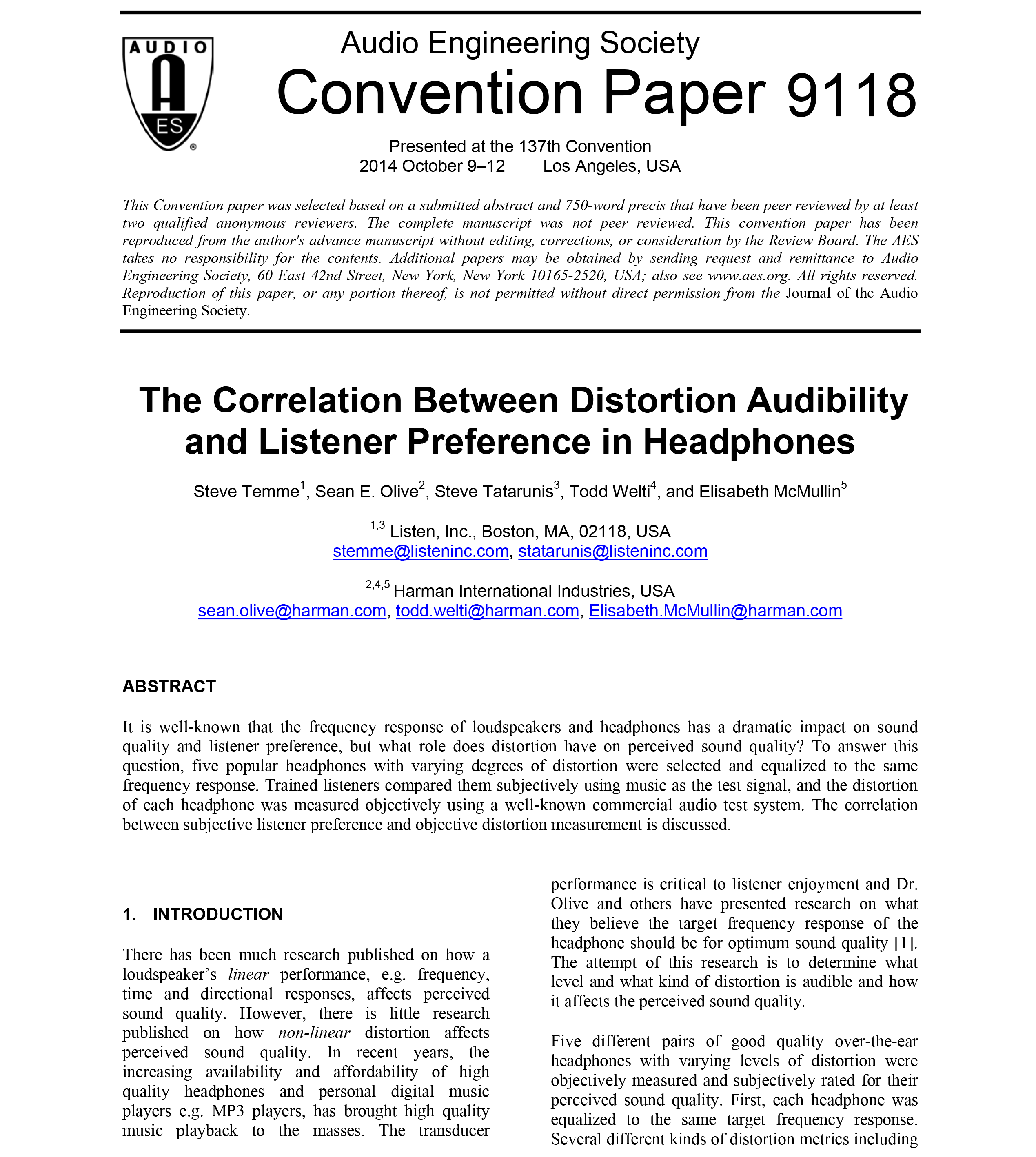How do you know ?
Which could entirely be a question of FR (particularly given that all Lambda style Stax, what you've experienced so far, share some common traits). Or not.
Knowing whether or not that is the case
requires the FR variable to be controlled, which unfortunately is quite difficult.
The only somewhat reliable way to do so below threshold of audibility is to record headphones on a dummy head after equalising them on the same dummy head to the same target (
without moving them between the measurement + EQ phase and the recording phase, otherwise FR may change).
This is what was done (without the bit in italic though, unfortunately) in this study on the influence of non-linear distortion on preference scores :
It is well-known that the frequency response of loudspeakers and headphones has a dramatic impact on sound quality and listener preference, but what role does distortion have on perceived sound quality? To answer this question, five popular headphones with varying degrees of distortion were...

www.aes.org
That study notably included the K701 and Stax 009 which scored the same (although I'd posit that in the format of Harman's research, similar score =/= sounds the same, it just means "equally preferred"), and where it seems tests subjects generally had a difficult time to pick headphones appart when tested this way.
Another way is to perform in situ measurements with in-ear mics, but that is not straightforward to do.
What you can't do however, is equalise to the same target your own samples according to third party presets based on other samples, and then presume that the FR variable has been effectively controlled.
I've owned one for several years.


